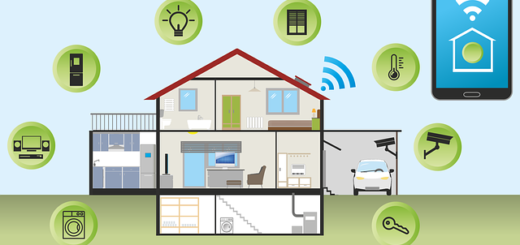Top 10 Sustainable Kitchen Appliances for a Greener Home
Sustainable living begins at home, and the kitchen is one of the best places to make eco-friendly changes. With a variety of energy-efficient and environmentally conscious appliances available, it’s easier than ever to minimize your carbon footprint while enhancing your lifestyle. This guide explores the top 10 sustainable kitchen appliances that can transform your kitchen into a greener, more efficient space.
Table of Contents
What Are Sustainable Kitchen Appliances?
Sustainable kitchen appliances are designed with energy efficiency, eco-friendliness, and durability in mind. These appliances typically:
- Use advanced technology to reduce energy and water consumption, helping you save on utility bills while doing your part for the environment.
- Are constructed with recyclable, renewable, or sustainably sourced materials, ensuring they leave a smaller environmental footprint.
- Come with certifications like Energy Star, which verify their compliance with high standards for energy efficiency and eco-impact.
Choosing these appliances helps:
- Reduce greenhouse gas emissions and support the fight against climate change.
- Conserve natural resources, making them an essential part of sustainable development.
- Support waste reduction by offering durable products that last longer, minimizing the need for frequent replacements and reducing landfill waste.
Sustainable kitchen appliances don’t just help the planet—they also enhance your home with user-friendly, high-performance designs. For example:
- Energy-efficient refrigerators that use less power without compromising on cooling.
- Water-saving dishwashers that reduce water consumption while still getting your dishes sparkling clean.
Criteria for Selecting Sustainable Appliances
Before investing in sustainable kitchen appliances, it’s important to consider several key factors to ensure you’re making an informed and eco-friendly choice. Here’s a closer look at what to keep in mind:
- Energy Efficiency: Look for appliances that have an Energy Star rating or similar certifications. These products are tested to ensure they consume less energy, saving you money while reducing your carbon footprint.
- Durable Materials: Choose appliances made from long-lasting or recyclable materials. Not only do these products last longer, but they also contribute less waste over time, which is a win for both your wallet and the environment.
- Water Conservation: For appliances like dishwashers and faucets, check for models that offer low water usage. These efficient products use less water while still performing at a high level, which helps conserve one of our most precious resources.
- Smart Technology: Opt for appliances with smart technology that automatically adjust their energy use. These gadgets optimize consumption by adjusting settings based on usage patterns, which can help cut down on unnecessary energy waste.
- Reputation and Reviews: When selecting sustainable appliances, don’t forget to look at the brand’s reputation. Reliable companies with a history of commitment to sustainability tend to offer products that live up to their promises. Customer reviews can provide real-world insights into performance and durability, helping you make a more confident choice.
Benefits of Using Sustainable Kitchen Appliances
Switching to sustainable kitchen appliances is more than just a trend—it’s a smart, responsible choice that can benefit both your home and the environment. These appliances are designed to use less energy and water, reduce waste, and last longer than conventional options. Whether you’re motivated by saving money, reducing your environmental impact, or simply upgrading your kitchen, sustainable appliances offer a variety of advantages. Here are some key benefits that come with making the switch to a greener kitchen:
Economic Savings
One of the most immediate benefits of switching to sustainable kitchen appliances is the potential for economic savings. These appliances are designed to use less energy and water, which can lower your utility bills. For example, an energy-efficient refrigerator consumes less power, and a water-saving dishwasher reduces water usage without compromising performance. Over time, these savings add up, making your initial investment in these appliances well worth it. Plus, many sustainable appliances are built to last longer, which means you won’t have to replace them as often, saving even more in the long run.
Environmental Impact
Choosing sustainable kitchen appliances also has a positive effect on the environment. By using less energy and water, you reduce your household’s reliance on non-renewable resources. This means fewer emissions of greenhouse gases and a smaller carbon footprint overall. Additionally, many of these products are made from recyclable or renewable materials, contributing less to landfill waste. This shift away from single-use, high-impact products is an important step in promoting a cleaner, healthier planet for future generations.
Enhanced Kitchen Experience
On top of the financial and environmental benefits, sustainable kitchen appliances can also enhance your kitchen experience. Many of these products come with high-tech features, such as smart settings that adjust to your usage patterns, or quiet operations that make your kitchen more pleasant to work in. They also offer sleek, modern designs that fit seamlessly into any kitchen. So, while you’re helping the planet and saving money, you’re also upgrading your kitchen with the latest innovations in convenience and style.
Top 10 Sustainable Kitchen Appliances for a Greener Home
In today’s world, sustainability is more important than ever, and making eco-friendly choices in the kitchen is a great place to start. From energy-saving refrigerators to water-efficient dishwashers, sustainable kitchen appliances are designed to help reduce your household’s environmental footprint while providing high performance and convenience. These appliances not only save money on energy bills but also contribute to the broader goal of reducing waste and conserving natural resources. If you’re looking to make your kitchen greener, here’s a list of the Top 10 Sustainable Kitchen Appliances that will help you create an eco-friendly home without compromising on quality or style.
1. Energy-Efficient Refrigerators
Refrigerators account for a significant portion of household energy usage, so choosing an energy-efficient model can lead to substantial savings over time. These models feature:
- Advanced insulation and compressors: Help keep the interior at a consistent temperature while using less energy.
- Adjustable temperature settings: Allow you to control the cooling, making it more energy-efficient depending on the amount of food stored.
- Smart sensors: Automatically adjust settings based on usage patterns to optimize energy consumption.
Popular Choices:
- LG Energy Star models: Known for their reliability and advanced technology.
- Samsung Family Hub Refrigerators: Offer smart features that improve efficiency and convenience, such as touchscreen displays and voice control options.
2. Energy-Saving Dishwashers
Dishwashers are another appliance that can significantly impact water and energy consumption. Energy-efficient models use less water per cycle and adjust washing intensity based on the load size. Many modern dishwashers feature:
- Eco modes: Reduce energy and water consumption during normal washes.
- Soil sensors: Detect how dirty the dishes are and adjust the wash cycle accordingly.
- Quiet operation: These dishwashers run quietly, making them a great option for open-plan kitchens.
Popular Choices:
- Bosch 500 Series: Known for water-saving and quiet operation.
- Whirlpool WDF540PADM: Features energy-saving cycles and noise-reducing technology.
3. Induction Cooktops
Induction cooktops are a more energy-efficient alternative to traditional gas or electric stoves. They use magnetic fields to directly heat pots and pans, offering faster cooking times and precise temperature control. Benefits include:
- Faster cooking times: Induction heats the pan directly, reducing energy loss.
- Energy efficiency: Since heat is generated directly in the cookware, very little energy is wasted.
- Easy-to-clean surfaces: The cooktop stays cool, making it easier to wipe up spills.
Popular Choices:
- Bosch 800 Series Induction Cooktop: Known for its sleek design and efficient cooking.
- Samsung NZ30K7880UG: Offers advanced features like Wi-Fi connectivity and precise temperature control.
4. Low-Flow Faucets
Faucets account for a surprising amount of water usage in the kitchen. Low-flow faucets are designed to conserve water without sacrificing performance. Features to look for:
- Aerators: Mix air with water to maintain strong pressure while using less water.
- Motion sensors: Automatically turn the water on or off when needed, preventing waste.
- Temperature control: Help reduce hot water use by maintaining the right temperature for washing dishes.
Popular Choices:
- Moen 5923 SRS Align Pulldown Faucet: Energy-efficient and stylish.
- Kohler Artifacts Kitchen Faucet: Offers precise water flow control and an eco-friendly design.
5. Smart Ovens
Smart ovens offer energy-efficient cooking options by optimizing heat distribution and cooking times. These ovens can connect to your smartphone, allowing you to monitor and control cooking remotely. Key features include:
- Smart cooking settings: Automatically adjust temperature and cooking time based on the dish.
- Preheat faster: Many smart ovens can preheat more efficiently, saving time and energy.
- Convection cooking: Ensures even heat distribution, reducing the energy needed for cooking.
Popular Choices:
- GE Profile Smart Oven: Known for its app integration and advanced cooking features.
- Whirlpool Smart Wall Oven: Offers smart control features and energy-efficient cooking modes.
6. Energy-Efficient Microwaves
Microwaves are one of the most commonly used kitchen appliances, and energy-efficient models help reduce their environmental impact. These microwaves typically feature:
- Inverter technology: Provides a more consistent cooking power, using energy more efficiently.
- Compact designs: Smaller, more energy-efficient models that meet everyday cooking needs without overusing power.
Popular Choices:
- Panasonic NN-SN966S: Features inverter technology for more energy-efficient cooking.
- Breville Quick Touch Microwave: Offers smart settings to reduce energy use during cooking.
7. Composting Appliances
Composting appliances allow you to recycle food waste into rich, nutrient-dense compost for your garden. These appliances reduce landfill waste and help nourish plants. Features to look for:
- Odor control: Advanced filtration systems that keep your kitchen smelling fresh.
- Compact design: Easy to store and use in any kitchen.
Popular Choices:
- Food Cycler by Verterra: A compact appliance that turns food waste into compost in just a few hours.
- NatureMill Automatic Composter: Offers a large capacity and fast composting cycle.
8. Solar-Powered Kitchen Appliances
Solar-powered kitchen appliances harness the power of the sun to reduce energy costs. For example, solar-powered water heaters or solar cookers can help cut down on electricity usage. Features include:
- Solar panels: Capture energy from the sun to power your appliances.
- Sustainability: Reduces reliance on grid electricity and lowers your carbon footprint.
Popular Choices:
- Sun Oven: A solar cooker that can cook a wide range of dishes using only solar energy.
- Solar Water Heating System: Provides hot water for your kitchen using solar energy.
9. Air Fryers
Air fryers are a more energy-efficient alternative to traditional deep fryers. They cook food using hot air rather than oil, significantly reducing energy usage. Benefits include:
- Faster cooking times: Air fryers heat up quickly, reducing cooking time and energy consumption.
- Less oil, less waste: Using less oil helps reduce waste and make meals healthier.
Popular Choices:
- Ninja Air Fryer: Known for its efficiency and quick cooking times.
- Cosori Smart Air Fryer: Offers multiple cooking functions and energy-saving features.
10. Water Purifiers
Water purifiers provide a more sustainable way to filter tap water instead of relying on bottled water. These appliances typically:
- Reduce plastic waste: By eliminating the need for bottled water.
- Energy-efficient filtration: Advanced filters that use less energy while providing clean, fresh water.
Popular Choices:
- Brita Advanced Water Filter: Easy to use and energy-efficient.
- PUR Faucet Water Filter: Provides quick and efficient filtration for your tap water.
These top 10 sustainable kitchen appliances are excellent choices for anyone looking to make their home more eco-friendly. Each of these products helps reduce energy, water usage, and waste, making them an essential part of creating a greener, more sustainable home.
Tips for Maintaining Sustainable Kitchen Appliances
Maintaining sustainable kitchen appliances is key to getting the most out of them while keeping them running efficiently. By taking a few simple steps, you can help extend their lifespan, reduce energy consumption, and continue supporting an eco-friendly home. Here are some tips to get you started:
1. Regularly Clean and Service Appliances
Just like any piece of equipment, appliances work best when they’re clean and well-maintained. Regular cleaning can prevent buildup that could reduce efficiency. For example, cleaning the coils of your refrigerator or the filters in your dishwasher can keep them running smoothly. Be sure to follow the manufacturer’s instructions for servicing and cleaning to avoid damage and ensure the appliance continues to work as efficiently as possible.
2. Use Recommended Settings to Conserve Energy
Each sustainable appliance is designed with specific settings that optimize energy use. For instance, use the eco-mode on your dishwasher or washing machine to reduce water and energy consumption. Likewise, setting your refrigerator to the recommended temperature (usually around 37°F for the fridge and 0°F for the freezer) helps it run more efficiently without overworking the compressor. Taking advantage of these preset settings ensures that you’re not using more power than necessary.
3. Replace Worn-Out Parts with Eco-Friendly Alternatives
Over time, certain parts of your appliances—like filters, seals, or gaskets—can wear out. When replacing them, try to use eco-friendly alternatives. For example, look for reusable water filters instead of single-use ones, or buy replacement parts made from recycled materials. Not only will this help reduce waste, but it also ensures your appliance keeps working efficiently.
4. Avoid Overloading Machines
While it might be tempting to cram as much as possible into the dishwasher or refrigerator, overloading can actually cause these machines to work harder and use more energy. For dishwashers, an overloaded load can prevent water from reaching all dishes, leaving you with partially cleaned items and the need for another cycle. Similarly, stuffing your fridge too full can block airflow, making it harder for the appliance to keep things cool. By loading your appliances properly, you’ll ensure they’re working as efficiently as possible.
Common Myths About Sustainable Kitchen Appliances
When it comes to sustainable kitchen appliances, there are several myths that might hold you back from making the switch. Let’s take a look at some of the most common misconceptions and set the record straight:
Myth 1: Sustainable Appliances Cost Too Much Upfront
One of the biggest myths about sustainable appliances is that they are far too expensive. Sure, some eco-friendly models may cost more initially, but the higher price tag is often offset by the savings you’ll see on your utility bills over time. Energy-efficient appliances, such as fridges or dishwashers, use less electricity and water, meaning your monthly bills will be lower. For example, an energy-efficient refrigerator can save you up to $100 annually in energy costs. When you factor in these savings, the initial investment quickly pays for itself, making it a smart long-term decision. Plus, many sustainable appliances are built to last longer, meaning you won’t have to replace them as often, which saves you even more money down the road.
Myth 2: Eco-Friendly Appliances Lack Performance
Another common myth is that eco-friendly appliances don’t perform as well as their traditional counterparts. People often think that energy-efficient models are somehow slower or less effective. This is simply not true. Thanks to advancements in technology, modern sustainable appliances are designed to provide top-notch performance while conserving energy. Take dishwashers, for example. Older models may have required multiple washes to get dishes clean, but today’s eco-friendly dishwashers use smart sensors and energy-saving cycles that clean just as well—if not better—while using less water and electricity. Similarly, energy-efficient refrigerators and washing machines have improved insulation and better compressors, ensuring optimal performance without wasting power. So, you don’t have to sacrifice performance for sustainability; the two go hand in hand.
Cost vs. Savings: Are Sustainable Appliances Worth It?
When it comes to investing in sustainable kitchen appliances, the question on many minds is whether the higher upfront costs are truly worth it in the long run. It’s true that eco-friendly appliances often come with a steeper price tag, but when you look at the bigger picture, the savings you’ll see over time make them a smart financial choice.
Initial Investment
At first glance, sustainable appliances can seem pricey. For example, an energy-efficient refrigerator or a high-performance dishwasher may cost more than their traditional counterparts. However, this initial investment is typically outweighed by the savings they provide.
Long-Term Savings
Studies consistently show that households can save hundreds of dollars annually on energy bills by using energy-efficient appliances. For instance, an Energy Star-certified refrigerator can save you anywhere from $50 to $100 a year in electricity costs. Similarly, a water-saving dishwasher can lower water and energy usage, further reducing monthly utility bills. Over the course of the appliance’s lifespan, these savings can add up significantly, often exceeding the additional upfront cost.
Durability and Longevity
Sustainable appliances are built to last longer than standard models. The high-quality materials and advanced technology used in their design not only make them more energy-efficient but also more durable. This means fewer repairs and replacements, which ultimately saves you money. With appliances that are more robust and longer-lasting, you’re getting better value for your money in the long term.
Environmental Impact
Aside from financial savings, sustainable appliances also help reduce your environmental footprint. By using less energy and water, you contribute to the conservation of natural resources and help lower greenhouse gas emissions. This aligns with a growing desire for eco-conscious living, making the investment in these appliances a way to contribute to a cleaner, greener planet.
The Future of Kitchen Sustainability
As the world continues to prioritize sustainability, the kitchen is becoming a focal point for innovation. Emerging trends point to a future where cooking and food preparation are not only more efficient but also kinder to the planet. Here’s a glimpse at some of the exciting developments that are shaping the future of kitchen sustainability:
1. Fully Solar-Powered Kitchens
Imagine a kitchen powered entirely by the sun. Fully solar-powered kitchens are becoming increasingly feasible as solar panel technology improves. These kitchens will feature solar panels that generate energy to power appliances like refrigerators, ovens, dishwashers, and even smaller gadgets like blenders or coffee makers. This reduces reliance on grid electricity and helps homeowners save on their energy bills, all while contributing to a cleaner, greener environment. In some cases, excess energy can even be stored or sent back to the grid, offering further benefits to both the household and the community.
2. Integration of AI for Optimizing Energy Usage
Artificial intelligence is rapidly advancing in many industries, and the kitchen is no exception. In the future, AI will play a major role in optimizing energy consumption. Smart appliances equipped with AI will be able to learn from user habits, adjusting their settings automatically to reduce energy use when it’s not needed. For instance, a refrigerator could adjust its cooling power based on when it’s opened most frequently, while an oven could optimize cooking times to reduce energy waste. Additionally, AI could integrate with home automation systems, allowing users to control and monitor their kitchen appliances remotely for maximum efficiency.
3. Use of Biodegradable or Recyclable Components
Another exciting trend is the shift towards biodegradable or recyclable materials in the construction of kitchen appliances. Instead of traditional plastic or metal parts, which can take hundreds of years to decompose, future appliances could be made from materials that are easier on the planet. For example, biodegradable plastics, plant-based components, and sustainable metals could be used to build everything from countertops to the inner workings of dishwashers. This would drastically reduce the environmental impact of appliances at the end of their lifespan.
How to Dispose of Old Kitchen Appliances Responsibly
When it’s time to upgrade your kitchen appliances, it’s important to dispose of the old ones in a responsible and eco-friendly manner. Throwing them in the trash can lead to unnecessary waste and harm the environment. Fortunately, there are several responsible disposal options that help reduce your carbon footprint and keep your appliances from ending up in a landfill. Here’s how to do it the right way:
1. Donate Functional Appliances to Charities
If your old appliances are still in good working condition, donating them is a great option. Many charities and non-profit organizations accept gently used appliances for those in need. Local shelters, community centers, and organizations like Habitat for Humanity may be interested in taking your old fridge, stove, or microwave. Donating not only gives the appliance a second life but also helps someone in your community who may not be able to afford new items. It’s a win-win for both the environment and those who benefit from your generosity.
2. Recycle Non-Functional Devices at Certified Recycling Centers
For appliances that no longer work, recycling is the next best option. Many parts of old kitchen appliances—such as metal, plastic, and glass—can be recycled and repurposed. However, not all recycling centers are equipped to handle large appliances, so it’s important to find certified e-waste or appliance recycling centers in your area. These facilities are designed to safely break down and recycle appliances, reducing hazardous waste and preventing toxic substances like refrigerants and heavy metals from leaching into the environment. Check with your local waste management service for the best recycling centers that accept kitchen appliances.
3. Trade-in Programs from Major Retailers
Some major retailers offer trade-in programs where they’ll take your old appliances when you purchase new ones. These programs often provide discounts or credits toward your new purchase as an incentive. Retailers like Home Depot, Best Buy, and Lowe’s frequently run such offers. They often work with certified recycling services to ensure that old appliances are properly disposed of or recycled, so you can rest assured that your items will be handled responsibly. If you’re already planning to buy a new appliance, this is a convenient and eco-friendly way to dispose of your old one.
Frequently Asked Questions
What is the most energy-efficient kitchen appliance?
The most energy-efficient kitchen appliance is typically an Energy Star-certified refrigerator. Modern refrigerators use advanced technology such as improved insulation, variable-speed compressors, and smart temperature management to consume less energy while keeping food fresh. These appliances use up to 50% less energy than older models, saving you money on electricity bills over time. Other energy-efficient kitchen appliances include dishwashers, which use less water and power, and induction cooktops, which heat food more quickly and use less energy than traditional electric or gas stovetops. Investing in Energy Star-certified appliances ensures both efficiency and sustainability.
Can solar-powered appliances work indoors?
Solar-powered appliances typically rely on direct sunlight to generate energy, making them less effective indoors where natural light may be limited. However, some solar-powered devices, like small fans or lights, can work with indoor solar panels if placed near windows to capture sufficient sunlight. Efficiency depends on available light levels.
Are sustainable kitchen appliances durable?
Yes, sustainable kitchen appliances are generally designed with durability in mind. They are built using high-quality materials and advanced technology, which not only boosts their energy efficiency but also ensures a longer lifespan. Many eco-friendly appliances, such as Energy Star-rated refrigerators or dishwashers, are constructed to withstand years of use, reducing the need for frequent replacements. This longevity, combined with reduced energy and water consumption, makes sustainable appliances a smart investment for both the environment and your wallet.
How can I find Energy Star-rated appliances?
To find Energy Star-rated appliances, visit the official Energy Star website, where you can search by product category and brand. Many retailers also display Energy Star logos on qualifying products in-store and online. Look for the Energy Star label on appliance packaging or the product description for certification.
What materials are considered eco-friendly?
Eco-friendly materials are those that have minimal environmental impact during production, use, and disposal. Some examples include:
- Bamboo: A fast-growing, renewable resource used for flooring, furniture, and kitchen products.
- Recycled materials: Items made from post-consumer waste, such as recycled plastic, glass, or metal.
- Cork: A renewable material harvested from cork oak trees without harming the tree.
- Hemp: A versatile, biodegradable material used in textiles and building materials.
- Reclaimed wood: Salvaged wood from old structures, reducing the need for new timber. These materials help reduce waste, conserve resources, and promote sustainability.
Is maintenance for sustainable appliances different?
Maintenance for sustainable appliances is similar to regular appliances, but with a focus on preserving their efficiency. For example, cleaning filters, coils, or seals regularly can ensure energy efficiency is maintained. Using the recommended settings for energy and water conservation is also key. Some sustainable models may have specific guidelines to help optimize their eco-friendly features, so it’s important to follow the manufacturer’s instructions. Overall, routine care helps extend their lifespan and ensures they continue performing at their best while minimizing environmental impact.
Conclusion
Switching to sustainable kitchen appliances is a step toward a greener, more eco-conscious lifestyle. By investing in these top 10 appliances, you’ll reduce your environmental impact while enjoying a modern and efficient kitchen.












